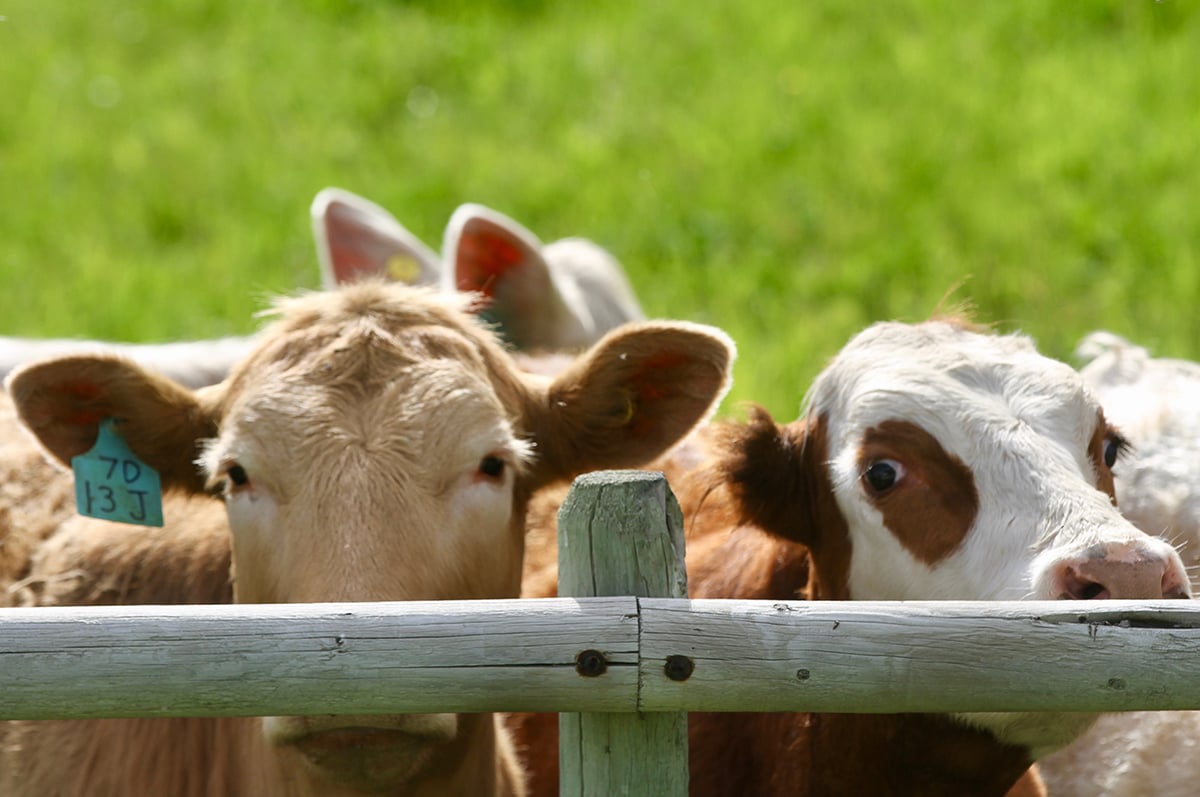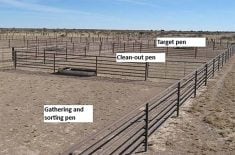OLDS, Alta. – When it comes to breeding superior market lambs, nothing should be left to chance.
By selecting rams with better than average genetic potential, the profit potential improves. Producers may not take home more money immediately but a flock’s reputation improves among lamb buyers.
“Don’t think if you take them some bad lambs, they won’t remember you,” said Cathy Gallivan, geneticist in charge of the western sire reference program based in Olds, Alta.
One lamb improvement tool involves a science called expected progeny differences, or EPDs. Improving market lambs using EPDs is a key goal of the three-year-old sire reference program.
Read Also

Feeder market consolidates at historic highs
For the week ending Sept. 6, Western Canadian feeder cattle markets were relatively unchanged compared to seven days earlier.
This year, 11 Suffolk breeders and two Charollais producers were involved in measuring their ram lambs.
Before introducing the science of EPDs, the breeders ran a ram test station. Rams went to the Olds facility after weaning. They were fed, weighed and monitored until breeding age.
While the program had merits, said Gallivan, it was costly and did not provide the same level of accuracy found in the calculations for expected progeny differences.
Selected rams that emerge from this program are usually sold as terminal sires to commercial breeders, so all offspring are sold as slaughter lambs.
EPDs are recorded as positive or negative numbers. These figures help breeders match a ram to a flock and are designed to improve production traits such as milking ability or heavier muscle. Weight, fat and lean meat yields are highly heritable.
A positive number means the offspring of the animal should have measurements that are larger than average.
For example, if more muscle and faster gain are desired, a ram with positive EPDs for lean muscle and better rate of gain is recommended.
EPDs are adjusted for the age of animal, the dam, farm type and feeding program.
“Without EPDs you don’t know if you are comparing management versus genetics,” said Gallivan.
To qualify for sale, rams must exhibit above average lean growth for their breed and must pass tests for teeth, legs and testicle development. All must be members of the Alberta Assured Quality Flock health program.
This year’s sale offered 29 Suffolk rams and, for the first time, three Charollais.
The western sire reference program involves 11 Suffolk sheep breeders in Alberta. An alliance with the Charollais society last year enlarged the program. Fifteen ewes in each flock are mated each year by artificial insemination to one or two reference sires. These are rams chosen by the group for superior growth and carcass characteristics. The group may select new reference sires each year.
The following year all lambs on each farm are weighed at 110 days. Ultrasound measures for back fat and muscle depth are taken. Combined with pedigree information, the ultrasound data is formulated to calculate EPDs for the rams.
The sire summary database contains measurements from more than 2,000 lambs that have been weighed and measured since 1996.















